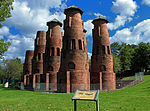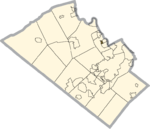Whitehall Township, Pennsylvania
All accuracy disputesPages with non-numeric formatnum argumentsPopulated places on the Lehigh RiverTownships in Lehigh County, PennsylvaniaTownships in Pennsylvania ... and 1 more
Use mdy dates from July 2023

Whitehall Township is a township with home rule status in Lehigh County, Pennsylvania. The township's population was 26,738 as of the 2010 census. Whitehall Township is a suburb of Allentown in the Lehigh Valley metropolitan region, which had a population of 861,899 and was the 68th-most populous metropolitan area in the U.S. as of the 2020 census. The township is 4.4 miles (7.1 km) north of Allentown, 64.1 miles (103.2 km) northwest of Philadelphia, and 93.7 miles (150.8 km) west of New York City.
Excerpt from the Wikipedia article Whitehall Township, Pennsylvania (License: CC BY-SA 3.0, Authors, Images).Whitehall Township, Pennsylvania
Saylor Drive, Whitehall
Geographical coordinates (GPS) Address Nearby Places Show on map
Geographical coordinates (GPS)
| Latitude | Longitude |
|---|---|
| N 40.666666666667 ° | E -75.5 ° |
Address
Saylor Drive 45
18037 Whitehall
Pennsylvania, United States
Open on Google Maps







